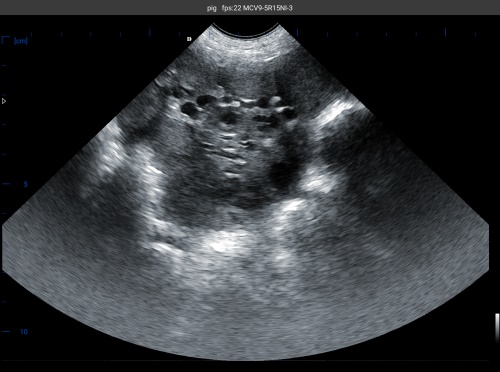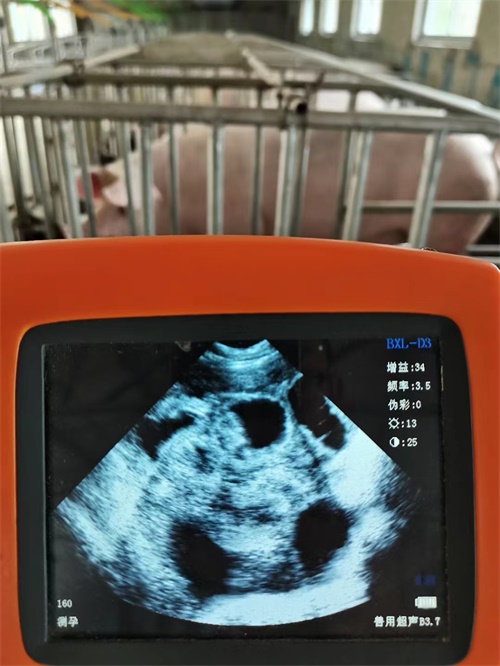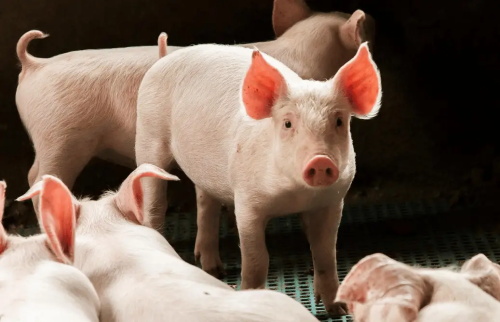For many livestock farmers around the world, managing sow pregnancy isn’t just part of the job—it’s a central piece of ensuring long-term farm sustainability and economic success. Especially in commercial pig farming, where margins are tight and efficiency matters, understanding the full scope of what goes into a successful sow pregnancy can make or break a reproductive cycle.

From monitoring early conception to observing late gestation health, the pregnancy period in sows demands attention, observation, and increasingly, the assistance of modern tools like ultrasonography. This article aims to explore how sow pregnancy is managed today—drawing from global practices, personal experience, and evidence-based insights—to offer a readable, experience-rich look at a subject that matters on every pig farm.
Recognizing the Signs: Is the Sow Pregnant?
Sow pregnancy begins invisibly. Without intervention, most farmers will wait weeks to confirm if a sow conceived after mating or artificial insemination. Traditionally, farmers relied on behavioral signs—like the absence of standing heat around 21 days post-insemination—as a key clue. While helpful, this method is far from perfect, especially for first-time breeders or when heat detection was unclear.
In recent years, more farms have embraced early pregnancy detection through non-invasive tools like ultrasonography. Portable ultrasound machines offer a clear look into the uterus starting from day 21 to 25 of gestation. At this point, small fluid-filled sacs—the early gestational sacs—become visible in a healthy pregnancy. Detecting them early allows the farmer to adjust feed, isolate the sow, and plan labor support in advance.
The 3 Phases of Sow Pregnancy
Pregnancy in sows lasts approximately 114 days and is often divided into three roughly equal phases:
1. Early Gestation (Days 0–35)
The most critical time for embryo development is the first month. During this period, fertilized eggs settle into the uterine lining and begin forming key organs. This phase is fragile—stress, malnutrition, or rough handling can cause embryonic loss. Farmers worldwide have learned that reducing movement, avoiding vaccinations (unless necessary), and optimizing nutrition during this phase significantly improves litter retention.
Veterinarians often recommend supplemental folic acid and vitamins during this period. One American study from Iowa State University showed that vitamin-supplemented sows in early gestation experienced an 8% higher litter survival rate compared to the control group. It’s a small but meaningful difference when scaled over a herd of hundreds.
2. Mid Gestation (Days 36–85)
This is the most stable and least risky phase of pregnancy, which makes it a good time to adjust sow body condition. Excessively fat sows face higher risks during farrowing, while underweight sows may not produce enough milk. International best practices advise body condition scoring every two weeks, using palpation and visual cues to monitor whether the sow is on track.
This is also when many farms perform routine mid-pregnancy ultrasounds. Besides confirming ongoing pregnancy, ultrasonography can monitor uterine fluid, detect abnormal fetal positioning, or flag cases of mummified fetuses—dead piglets that failed to resorb. Recognizing such anomalies early allows for intervention before the situation worsens.
3. Late Gestation (Days 86–114)
In the final month, the piglets grow rapidly, nearly doubling their weight in the last 30 days. This puts tremendous pressure on the sow’s metabolic system, particularly if she is carrying 10 or more piglets. Feed formulation is often adjusted during this time to increase energy and protein without encouraging excessive fat gain.
From experience on farms in Germany and Canada, producers often switch to high-fiber diets near day 100 to prevent constipation—a common late-pregnancy issue that can lead to dystocia (difficult labor). In colder regions, heating pads and indoor shelter are prepped in advance to ensure piglet survival after farrowing.

Ultrasound: A Game-Changer for Sow Management
Across countries and climates, one tool has become an essential part of sow pregnancy management: ultrasound. Specifically, portable veterinary-grade ultrasound machines provide real-time insights into pregnancy status, fetal viability, and uterine health.
The use of ultrasound helps overcome many limitations of traditional observation. For example:
-
Early Confirmation: As early as 21 days post-insemination
-
Fetal Counting: Though not exact, skilled veterinarians can estimate the number of fetuses around day 30–40
-
Health Checks: Detect uterine infections, fluid imbalances, or dead/mummified fetuses
In North America, machines like the BXL-V50 have gained traction due to their portability, waterproof design, and high-definition imaging. Many large-scale farms now rely on such tools as standard practice—making it easier to track hundreds of animals accurately and efficiently.
Nutrition: Feeding for Two (or Twelve)
Sow nutrition during pregnancy isn’t just about quantity—it’s about timing, content, and consistency. The feed strategy differs across each trimester:
-
Early Pregnancy: Avoid overfeeding; focus on vitamins, minerals, and balanced maintenance energy
-
Mid Pregnancy: Adjust based on body condition. Keep feed levels moderate to prevent excessive gain
-
Late Pregnancy: Increase feed volume by 10–15%, with more fiber and protein to support fetal growth and milk production
Many farmers now use phase-feeding programs, dividing gestation diets into 2–3 stages to match the sow’s changing needs. This trend, common in Europe and increasingly in Asia, has reduced farrowing complications and improved piglet weight at birth.
Environmental and Behavioral Considerations
It’s easy to forget that sows, like humans, respond to their environment and social stress. During pregnancy, minimizing noise, crowding, and heat stress plays a major role in reproductive success.
One Danish study showed that sows housed in group pens with soft flooring and low-stress feeding stations had 0.6 more live piglets per litter on average compared to traditional stall-housed sows. While converting to group housing requires investment, the welfare and productivity gains often make it worthwhile.
Behavior is also a strong indicator of problems. Lethargy, tail biting, sudden refusal to eat, or persistent vocalization may signal discomfort, pain, or underlying issues like fever or uterine inflammation. Here again, a quick ultrasound scan can clarify what’s going on internally without the need for invasive procedures.

Preparing for Farrowing
In the final 10–14 days before expected delivery, preparation becomes urgent. Farmers need to:
-
Clean and disinfect farrowing pens
-
Trim sow hooves (if needed)
-
Begin monitoring for signs of impending labor (nesting behavior, reduced appetite)
-
Check teat health and milk flow readiness
Veterinarians often recommend a final ultrasound check around day 100–105. This helps confirm fetal heartbeats and uterine positioning. If piglets appear unusually large or there’s evidence of uterine stress, some producers choose to adjust farrowing assistance plans or even schedule supervised deliveries.
A Personal Note from the Field
I’ve worked with pigs in both temperate and tropical regions, and one thing holds true: sow pregnancy is a daily responsibility, not just a checkbox after insemination. From walking the pens at sunrise to checking ultrasound images late at night, the work is demanding—but it pays off.
One sow on a farm in central Vietnam had a history of early embryo loss. By using early ultrasound and modifying her feed to include more vitamin E and selenium, we saw her next pregnancy result in 11 healthy piglets. She became one of the best producers on the farm.
These kinds of results don’t happen by chance. They’re the result of careful attention, data-driven decisions, and the willingness to adapt.

Conclusion
Pregnancy in sows is complex, delicate, and deeply influential on farm performance. While technology like ultrasound has transformed how we manage and monitor sow health, the fundamentals—good nutrition, clean environments, and daily observation—remain essential.
By paying close attention to each stage of the gestation process, farmers can reduce losses, improve piglet survival, and help every sow reach her full reproductive potential.
In today’s competitive farming world, “paying attention” isn’t just advice—it’s a survival strategy.
Reference Sources:
-
Iowa State University Swine Reproductive Studies. (2022). https://www.ans.iastate.edu
-
Pig Health and Welfare Council, UK. (2023). “Farrowing and Sow Management Best Practices.” https://www.pighealth.org.uk
-
Danish Agriculture & Food Council. (2021). “Group Housing Improves Piglet Survival.” https://agricultureandfood.dk
-
Veterinary Ultrasound Applications in Swine Herds. (2023). Journal of Animal Science, https://academic.oup.com/jas/article/101/Supplement_1/150/7092738